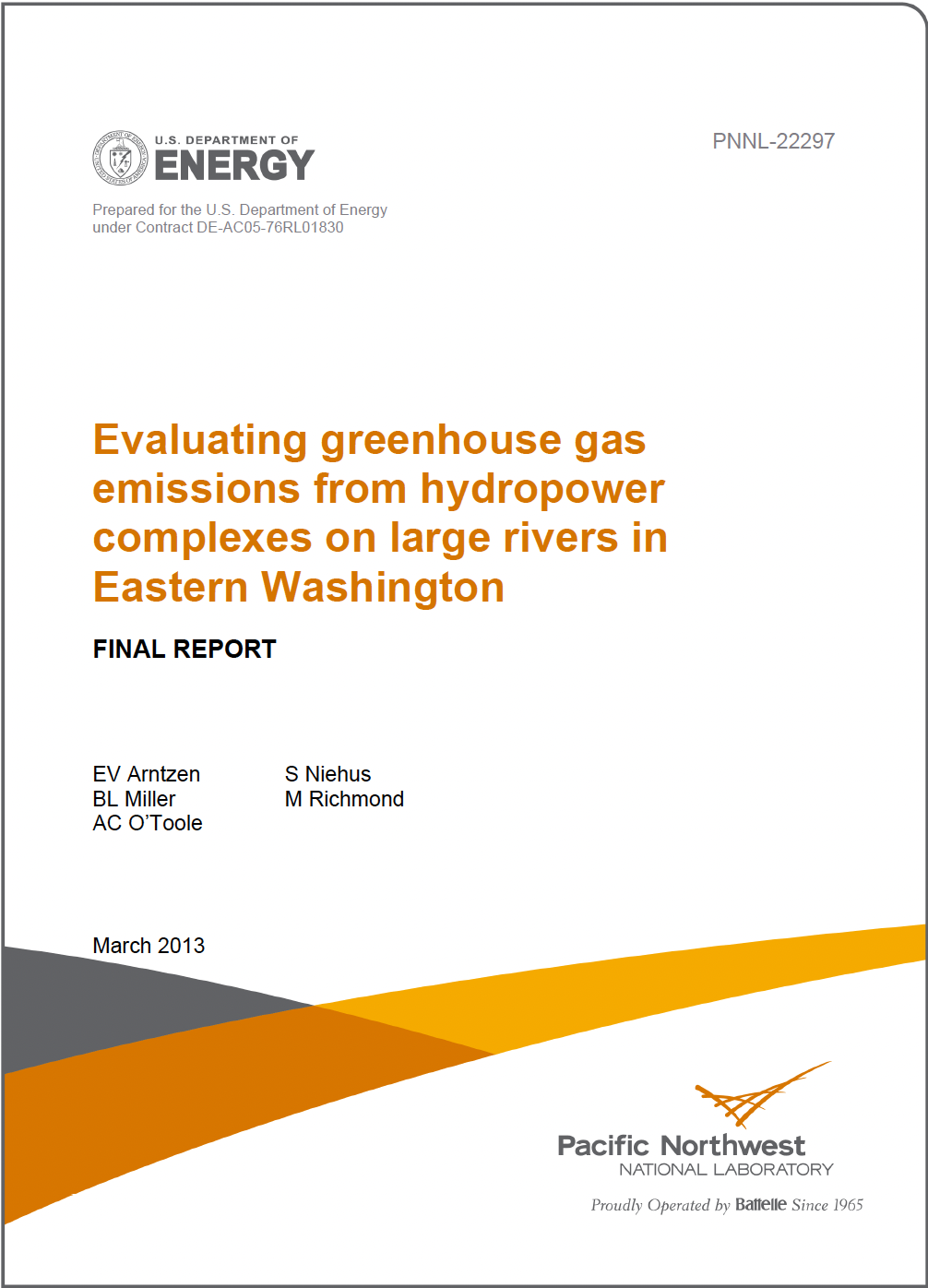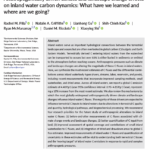Abstract: Inland water bodies, such as freshwater lakes, are known to be net emitters of carbon dioxide (CO2) and methane (CH4). In recent years, significant greenhouse gas (GHG) emissions from tropical, boreal, and mid-latitude reservoirs have also been reported. At a time when hydropower is increasing worldwide, better understanding of seasonal and regional variation in GHG emissions is needed in order to develop a predictive understanding of such fluxes within man-made impoundments. We examined reservoir impoundments created by power-producing dam complexes within xeric temperate locations in the northwestern United States. Sampling environments on the Snake (Lower Monumental Dam Complex) and Columbia Rivers (Priest Rapids Dam Complex) included tributary, mainstem, embayment, forebay, and tailrace areas during winter and summer 2012. At each sampling location, GHG measurements included multiple exchange pathways: surface gas flux, degassing as water passed through dams during power generation, ebullition within littoral embayments, and direct sampling of hyporheic porewater. Measurements were also carried out in a free-flowing reach of the Columbia River (the Hanford Reach) to estimate unaltered conditions. Surface flux resulted in very low emissions, with reservoirs acting as a sink for CO2 (up to –262 mg m-2 d-1, which is within the range previously reported for similarly located reservoirs). Surface flux of CH4 remained below 1 mg CH4 m-2d-1, a value well below fluxes reported previously for temperate reservoirs. Water passing through hydroelectric projects acted as a sink for CO2 during winter and a small source during summer, with mean degassing fluxes of –117 and 4.5 t CO2 d-1, respectively. Degassing of CH4 was minimal, with mean fluxes of 3.1 Å~ 10-6 and –5.6 Å~ 10-4 t CH4 d-1 during winter and summer, respectively. Gas efflux due to ebullition was greater in coves located within reservoirs than in coves within the free flowing Hanford Reach, and CH4 efflux exceeded that of CO2. CH4 ebullition varied widely across sampling locations, ranging from 10.5 to 1039 mg CH4 m-2 d-1, with mean fluxes of 324 mg CH4 m-2 d-1in Lower Monumental Dam reservoir and 482 mg CH4 m-2d-1 in the Priest Rapids Dam reservoir. The magnitude of CH4 efflux due to ebullition was relatively high, falling within the range recently reported for other temperate reservoirs around the world, further suggesting that this CH4 source should be considered in estimates of global greenhouse gas emissions. Methane flux from sediment pore-water within littoral embayments averaged 4.2 mg m-2 d-1 during winter and 8.1 mg m-2 d-1 during summer, with a peak flux of 19.8 mg m-2d-1 (at the same location where CH4 ebullition was also the greatest). Carbon dioxide flux from sediment pore-water averaged approximately 80 mg m-2d-1 with little difference between winter and summer. Similar to emissions from ebullition, flux from sediment pore-water was higher in reservoirs than in the free flowing reach. The findings reported in this investigation are consistent with recent discoveries of substantial CH4 emissions from temperate Swiss and Chinese reservoirs. There is an apparent global need to better understand CH4 emissions from littoral embayments of temperate hydroelectric reservoirs when estimating the impact of CH4 emissions on climate change.
Authors: EV Arntzen, S Niehus, BL Miller, M Richmond, and AC O’Toole


